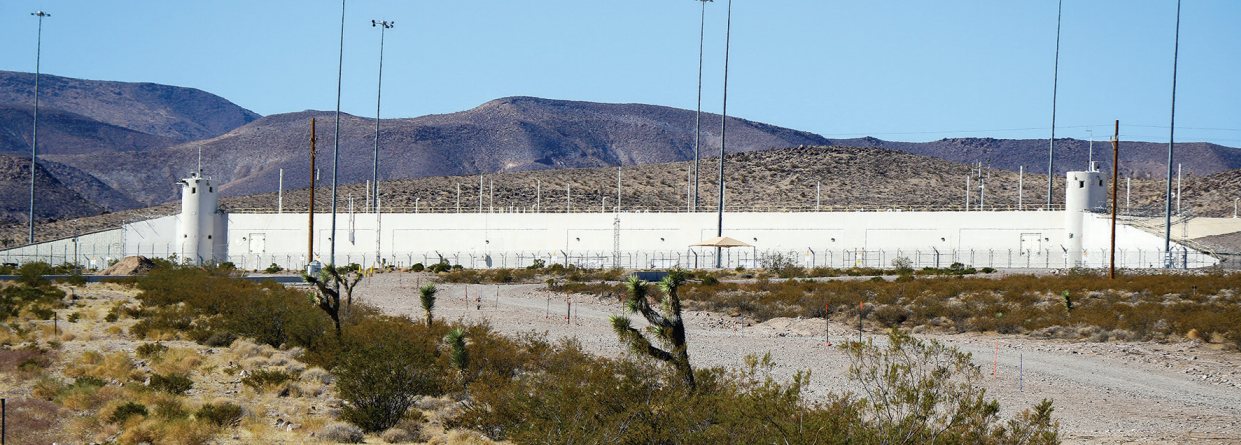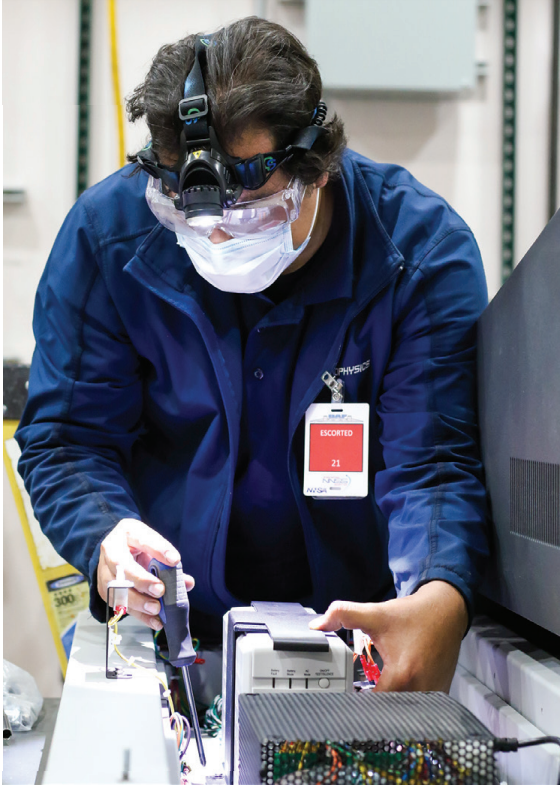
Device Assembly Facility (DAF)

Device Assembly Facility (DAF)
Like other assets across the NNSS, the Device Assembly Facility (DAF) supports the U.S. Department of Energy, National Nuclear Security Administration’s (NNSA) Stockpile Stewardship Program. Prior to the nuclear weapons testing moratorium in 1992, the DAF was designed and built to consolidate all nuclear explosive assembly functions, to provide safe structures for high explosive and nuclear explosive assembly operations, and to provide a state-of-the-art safeguards and security environment.
A National Resource
The DAF was designed for assembly, disassembly, modification, staging, transportation, maintenance, repair, retrofit and testing of nuclear devices. Today, the facility plays an integral part in supporting NNSA subcritical experiments, nuclear material management, stockpile surveillance and the National Criticality Experiments Research Center (NCERC). Although the U.S. is not currently conducting nuclear tests, the NNSS is charged with maintaining an underground test readiness program in the event that nuclear testing resumes. The DAF plays a crucial role in achieving that test readiness capability.
Safe and Secure

The design of the facility and its safety features make the DAF well suited to address new and evolving national
security challenges.
The DAF is located in the interior of
the Site. Its remoteness provides a
substantial safety zone for the general
public and adds to the security of the
facility. The facility is a collection of
individual steel-reinforced concrete
buildings connected by a rectangular
common corridor. And the entire
complex, covered by compacted earth,
spans an area of 100,000 square feet.
Safety systems include fire detection and suppression, electrical grounding, independent heating, ventilation and air conditioning systems with high efficiency particulate air filters, alarm systems and warning lights. In operational areas, pairs of blast doors – designed to mitigate the effects of an explosion – are interlocked so that only one door may open at a time.
Operational buildings in the DAF include assembly cells, high bays, assembly bays and radiography bays. In the assembly bays, glove boxes restrict airborne debris to a single area, and a down draft table includes vacuums that dispose of particles into a controlled area, which keeps debris from floating in the air. Staging bunkers provide space for staging nuclear components and high explosives. All materials packages arrive or depart the DAF through one of two shipping and receiving bays.
The support buildings include vaults for staging explosives or special nuclear
material, decontamination areas and an administration area. In addition, two buildings provide laboratory space – one for conducting instrumentation and environmental testing and the other for observing operations in an adjacent assembly cell.
